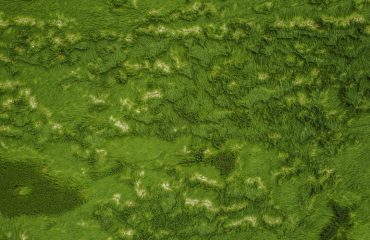body { font-family: sans-serif; line-height: 1.6; }
h1, h2, h3 { color: #333; }
h1 { font-size: 2.5em; }
h2 { font-size: 2em; }
h3 { font-size: 1.5em; }
The steel industry, a cornerstone of modern infrastructure and manufacturing, is constantly seeking advancements to improve the performance and longevity of its products. Nanotechnology, the manipulation of matter at the atomic and molecular level, is emerging as a game-changer, offering innovative solutions for enhancing steel surface treatments. This post delves into the fascinating world of nanotech’s application in improving steel’s properties, exploring its benefits and future potential.
Enhanced Corrosion Resistance through Nanomaterials
Corrosion is a major concern for steel structures, leading to significant economic losses and safety hazards. Traditional methods of corrosion protection often involve bulky coatings that can be expensive and environmentally unfriendly. Nanotechnology offers a more elegant and effective solution. Nanoparticles of materials like zinc oxide (ZnO), titanium dioxide (TiO2), and aluminum oxide (Al2O3) can be incorporated into coatings or applied as standalone treatments. These nanoparticles create a denser, more uniform coating, effectively blocking the penetration of corrosive agents like oxygen and water. Furthermore, some nanoparticles exhibit self-healing properties, meaning they can repair minor scratches and imperfections in the coating, maintaining long-term protection. The reduced thickness of nanocoatings compared to conventional methods also contributes to weight savings, a significant advantage in many applications.
Improving Steel Durability with Nano-Enhanced Coatings
Beyond corrosion resistance, nanotechnology enhances the overall durability of steel. Nanocoatings can significantly improve hardness, wear resistance, and scratch resistance. For instance, the incorporation of carbon nanotubes (CNTs) or graphene into coatings dramatically increases their strength and toughness. These nanomaterials form a strong, interconnected network, reinforcing the coating and making it more resistant to mechanical stress. This leads to extended lifespan for steel components in demanding applications, such as those found in the automotive, aerospace, and construction industries. The enhanced durability translates to reduced maintenance costs and improved overall performance.
Nanotechnology for Enhanced Surface Functionality
Nanotechnology allows for the modification of steel surfaces to impart specific functionalities. For example, the application of superhydrophobic nanocoatings can create surfaces that repel water and other liquids, preventing the buildup of dirt and contaminants. This is particularly useful in applications where cleanliness is crucial, such as food processing equipment or medical devices. Conversely, hydrophilic nanocoatings can be applied to enhance the adhesion of paints, adhesives, or other surface treatments. This precise control over surface properties opens up a wide range of possibilities for tailored steel applications.
The Role of Nanoparticles in Strengthening Steel
Nanotechnology isn’t limited to surface treatments; it’s also revolutionizing the bulk properties of steel itself. The addition of nanoparticles during steel production can significantly enhance its strength and toughness. For example, nanoparticles of ceramic materials can reinforce the steel matrix, improving its mechanical properties. This leads to the development of high-strength, lightweight steels, ideal for applications requiring both strength and weight reduction, like automotive parts and aerospace components. The precise control over nanoparticle dispersion and size offers significant opportunities for tailoring the mechanical properties of the resulting steel alloy.
Challenges and Future Directions of Nanotech in Steel Treatment
While the potential of nanotechnology in steel surface treatments is immense, challenges remain. The cost of producing and applying nanomaterials can be high, limiting widespread adoption in some applications. Furthermore, the long-term durability and environmental impact of some nanocoatings need further investigation. Research is ongoing to address these challenges, focusing on developing more cost-effective production methods, enhancing the stability of nanocoatings, and ensuring their environmental compatibility. Future research will likely explore the integration of advanced characterization techniques and computational modeling to optimize the design and application of nanomaterials for steel surface treatments. The development of self-healing nanocoatings and the exploration of novel nanomaterials with enhanced properties will further expand the possibilities of this exciting field.
The application of nanotechnology to steel surface treatments represents a significant advancement in materials science. By enhancing corrosion resistance, durability, and functionality, nanomaterials are transforming the performance and lifespan of steel components across various industries. As research continues and costs decrease, the widespread adoption of nanotech in steel treatment is poised to revolutionize the way we design, manufacture, and utilize steel products.
SEO Tags:
#nanotechnology #steel #surface treatment #corrosion resistance #nanomaterials




